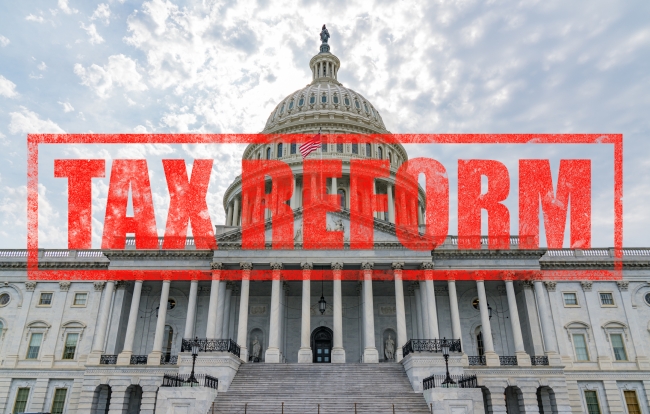You have /5 articles left.
Sign up for a free account or log in.

iStock
A proposal to tax some large private college endowments made it into the final version of a tax reform bill agreed to by House and Senate negotiators last week. The provision matches the more modest proposal included in the Senate tax bill passed this month, rather than a House proposal that would have affected many more institutions. But many college leaders have said the tax is bad policy and sets a dangerous precedent.
At the same time, many provisions in the tax legislation that alarmed colleges and students were left out of the final bill.
A House tax plan passed last month stripped from the tax code many benefits for students and borrowers. It also would have imposed for the first time a tax on college endowments with a provision targeting investment income of private colleges. A Senate plan passed Dec. 2 left those student tax benefits in place but included many other provisions higher ed groups said would be harmful to colleges, including the endowment tax.
Lobby groups and students have for weeks urged members of Congress to drop from a final bill provisions affecting students and colleges. Graduate students in particular ran a highly visible campaign to convince lawmakers to leave tax-exempt tuition waivers in place. Leaks from negotiations last week indicated that that message was received and that the final bill would leave the tuition benefits in place, as well as student loan interest deductions for borrowers repaying their loans.
Similar efforts made to kill the proposed endowment tax -- including those of Republican and Democratic lawmakers -- ultimately came up short.
A rundown of key provisions for higher ed in the final tax reform deal follows.
- Graduate student tuition waivers: The plan leaves in place a provision of the tax code allowing colleges and universities to waive or discount tuition for graduate students without having those benefits count as taxable income. The House bill would have eliminated the tax-exempt status of those tuition waivers.
- Employee-dependent tuition benefits: The final bill leaves untouched tax-exempt benefits for the spouses and dependent children of college employees. The House bill would have eliminated the tax-exempt status of those benefits.
- Student loan interest deductions: The plan maintains tax benefits for student loan borrowers, allowing them to deduct up to $2,500 paid toward student loan interest from their taxable income each year. The House bill had proposed eliminating that provision.
- Private endowments tax: The bill includes a 1.4 percent excise tax on investment income at private colleges with an enrollment of at least 500 students and with assets valued at $500,000 per full-time student. That reflects the more narrow proposal included in the Senate bill. The House bill would have taxed colleges with assets valued at $250,000 per full-time student. The provision is estimated to raise about $1.8 billion in revenue over 10 years. Lawmakers have estimated it will affect about 35 institutions (listed below).
- State and local tax deductions: The bill allows taxpayers to deduct up to $10,000 in state and local taxes from their federal tax bill. Many public higher education leaders had warned that the proposal in the original Senate tax plan to eliminate the deductions would put pressure on state budgets that support public universities -- and possibly lead to cuts in funding. The cap on those deductions will likely still create new worries for public universities in high-tax states like California and New York.
- Student loan discharge: The bill includes a House proposal that makes student loan debt discharged for death or disability tax exempt. That provision will sunset by 2025.
- Standard deduction: The bill doubles the amount of the standard deduction to $24,000 for joint filers and $12,000 for individuals. That means the number of taxpayers who would benefit from itemizing deductions -- including charitable contributions to entities like colleges and universities -- would shrink. Nonprofit groups, including colleges, say that change would lower the incentive for donating to colleges.
- Tax-exempt bonds: The bill maintains the tax-exempt private activity bonds, but eliminates advance refunding bonds.
Ted Mitchell, president of the American Council on Education, said the group was pleased that the final tax reform deal recognized the importance of education benefits. But he said other provisions would make a college degree more expensive and undermine the financial stability of institutions.
He cited the changes to the standard deduction, state and local tax deductions, and the excise tax on college endowments in particular.
"At a time when postsecondary degrees and credentials have never been more important to individuals and the nation, this tax reform legislation would make higher education more expensive and less accessible," Mitchell said. "This is a big step in the wrong direction."
Karin Johns, director of tax policy at the National Association of Independent Colleges and Universities, said the group was happy to see the retention of all student benefits as well as several key provisions involving institutional finance of colleges. However, she said, their member colleges will have to accommodate several new changes and that it remains to be seen what effect the bill has on charitable giving to higher ed institutions.
"The endowment tax and bond refinancing option are both misdirected efforts to absorb both charitable gifts to our institutions and cost saving refinancing options into the coffers of the federal government. It will ultimately add to our costs and overall ability to serve our students and provide the highest quality education," Johns said in an email. "If there is an additional opportunity for technical or nontechnical corrections to this bill, we will continue to advocate for the elimination of the endowment tax and the renewal of advanced bond refunding."
Below are the colleges affected by the endowment tax, according to NAICU and based on the most recent federal data. The order of colleges is based in descending order on the largest endowment valuation per full-time student -- so, the largest tax bill to the smallest for affected institutions. But the group cautioned that colleges' expected liabilities, and the list order, could change based on how the language of the provision (which higher ed groups have warned remains too vague) is defined.
Princeton University
Princeton Theological Seminary
Yale University
Harvard University
Stanford University
Pomona College
The Juilliard School
Weill Cornell Medical College (Note: According to Cornell University, units in New York City including the the medical college count toward the university's single endowment. So the medical college would not be affected by the new tax.)
Amherst College
Swarthmore College
Massachusetts Institute of Technology
Grinnell College
Williams College
California Institute of Technology
Rice University
Wellesley College
Cooper Union
Medical College of Wisconsin
Dartmouth College
Washington and Lee University
Bowdoin College
University of Notre Dame
University of Richmond
Smith College
Baylor College of Medicine
Icahn School at Mt. Sinai
Emory University
Washington University in St. Louis
Bryn Mawr College
Claremont McKenna College
Trinity University (Texas)
University of Chicago








